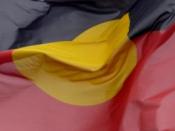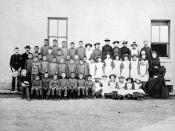School is supposed to be an institution where children get their education. However, that was not the case for aboriginal people. For the aboriginal people, school has been a place where they lost their true identity. First Nations children were placed in residential schools in an attempt to make them "Canadian" (Hare and Barman 332). Assimilation was seen as a possible way to resolve an "Indian problem" crisis. Therefore, the Canadian government felt that assimilation was one way to deal with the perceived problem (Hare and Barman 332). To assimilate the children, the Canadian government believed that the best way was to separate them from their families, communities, and culture (Hare and Barman 332). In residential school they were not able to contact their families; they were also given poor education, and few life skills (Hare and Barman 332). Consequently, the main effects of residential school on first Nations include the loss of intellectual, spiritual beliefs, and emotional trauma.
The Native children were denied legitimate schooling because they did not spend much time learning in the classrooms and did not receive the proper education like the Canadian children (Hare and Barman 336). In Hare and Barman's opinion, life at the schools was often harsh and rules were strict (336). Native children spent most of the day in Christian religious instruction, learning English or French, and doing chores (Hare andBarman 336). The Aboriginal children on average spent "less than two hours per day on academic subjects and more on labourious work" (Hare and Barman 336). Many students consider the system of the schools left them with no provision for life outside the school (Ignace R 24). For example, many people grew up not having skills to get jobs, nor the ability to make decisions for themselves (Haig Brown 60). As a...


